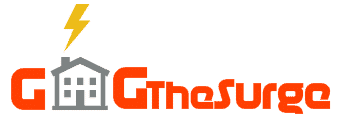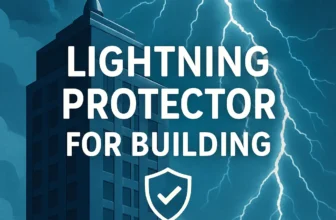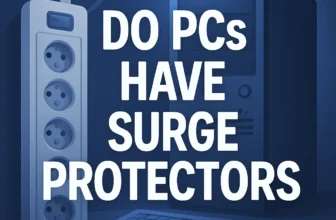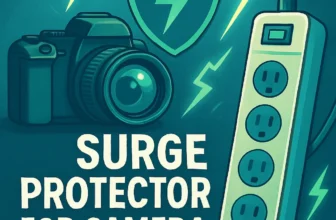Published By: Marc Edwards | Last updated on November 17, 2025 and reviewed by Editorial Team

Most of us rely on surge protectors to safeguard our appliances and devices, but are they truly the foolproof solution? Let’s investigate in further details the challenges presented by “dirty power” and understand why surge protectors often don’t provide complete protection. Good quality power is highly beneficial for the longevity and performance of our beloved electrical appliances, and dirty power can compromise both. When our electrical systems experience frequent power fluctuations, it can lead to reduced lifespan, frequent breakdowns, decreased efficiency, and safety risks.
While surge protectors can protect against power surges, they might not offer the full protection necessary to safeguard against all forms of dirty electricity. It is recommended to understand the hidden costs associated with dirty power and consider alternative solutions to ensure electrical safety and the quality of incoming power.
Key Insights |
| Surge protectors may not fully protect against all forms of dirty electricity. |
| Dirty power can lead to reduced lifespan, frequent breakdowns, decreased efficiency, and safety risks. |
| Alternative solutions such as power conditioners and regular maintenance can minimize the effects of dirty power. |
| Consulting experts can provide tailored solutions for protecting equipment from dirty electricity. |
What is Dirty Electricity?
Dirty electricity refers to electrical power that is characterized by spikes, surges, and irregular frequencies. It is caused by various factors such as outdated electrical infrastructure, surges from heavy machinery, or interference from nearby electronic devices. This form of electricity disrupts the smooth flow of electrical energy, leading to equipment malfunctions and damages.
To better understand dirty electricity, think of it as a disruption in the steady flow of electrical power. Imagine electrical power as a calm, steady stream of water flowing in a river. This stream represents clean, stable electricity supplying consistent energy. However, dirty electricity is like sudden, unpredictable ripples or waves in this stream, caused by various interferences or fluctuations in the electrical current. These disruptions can be likened to throwing stones into the river, creating ripples that disturb the otherwise smooth flow.
Just as these ripples disrupt the water flow, dirty electricity causes irregularities in the electrical supply, potentially harming electrical appliances and systems. Electricity that has been contaminated (dirty) can have detrimental effects on a wide range of electrical equipment, including appliances, electronics, and machinery. It can lead to decreased performance, shortened lifespans, increased energy consumption, and even safety hazards.
Causes of Dirty Electricity
Dirty electricity can originate from various sources:
- Outdated electrical infrastructure: Aging electrical systems may struggle to regulate power, leading to irregularities in the electrical supply.
- Surges from heavy machinery: High-powered equipment can introduce sudden surges and fluctuations into the electrical system, affecting its overall stability.
- Interference from nearby electronic devices: When electronic devices are placed near each other, they can create electromagnetic interference, resulting in disturbances to the power supply.
These factors contribute to the presence of erratic power, characterized by unpredictable voltage fluctuations and irregular frequencies.
Consequences of Dirty Electricity
The presence of dirty electricity can have several negative consequences:
- Equipment malfunctions: Dirty electricity disrupts the normal functioning of electrical equipment, leading to frequent breakdowns and reduced performance.
- Decreased lifespan: The erratic nature of dirty electricity can accelerate wear and tear on electrical components, shortening their overall lifespan.
- Energy inefficiency: Appliances and devices exposed to dirty electricity may consume more energy than necessary, resulting in higher utility bills.
- Potential safety risks: Unstable electrical power can create fire hazards or increase the risk of electrical shocks, posing a threat to both people and property.
To protect electrical systems and devices from the harmful effects of dirty electricity, proactive measures need to be taken. The next section will examine various solutions and strategies for mitigating dirty electricity and enhancing power quality.
The Hidden Costs of Dirty Electricity
Dirty electricity can have several hidden costs that can significantly impact your equipment and overall operations. Understanding these costs is crucial for effectively managing the risks associated with dirty electricity. Let’s explore some of the key hidden costs:
Shortened Equipment Lifespan
The presence of dirty electricity can accelerate the deterioration of your equipment, leading to a shorter lifespan. Electrical appliances and machinery are designed to operate under specific voltage and frequency conditions. When exposed to erratic and fluctuating power, equipment experiences increased wear and tear, reducing its overall lifespan, including surge protection devices.
Frequent Breakdowns
Dirty electricity can cause significant problems for electrical systems and equipment. It can lead to premature wear and tear on components, cause equipment to malfunction, and even result in complete system failures. The presence of distorted waveforms and electrical noise can be particularly problematic, leading to issues such as data corruption and equipment damage. Implementing measures to mitigate the effects of dirty electricity can help minimize the risk of equipment failure and reduce associated costs.
Using proper filtering, conditioning, or isolation techniques can help safeguard against the adverse effects of dirty electricity. By taking proactive steps to maintain electrical health, businesses can reduce the likelihood of costly downtime and ensure continuity of their operations.
Decreased Efficiency
Equipment operating under conditions of dirty electricity often experiences decreased efficiency. The inconsistent and unstable power supply affects the performance and productivity of electrical appliances, resulting in suboptimal output and increased energy consumption. This inefficiency can lead to higher operational costs and reduced profitability.
Safety Risks
One of the most significant hidden costs of dirty electricity is the potential safety risks it introduces. Power surges and fluctuations caused by dirty electricity can create hazardous situations, including fire hazards and electric shocks. These safety risks not only endanger your personnel but also put your entire facility at risk. It is essential to address the hidden costs of dirty electricity to ensure the smooth operation and longevity of your equipment. By implementing effective measures to mitigate dirty electricity and protect your equipment, you can minimize these hidden costs and improve overall operational efficiency.
Next, we will discuss various solutions for protecting your equipment from the detrimental effects of dirty electricity. But before that, take a look at the image below, which illustrates the potential risks and costs associated with dirty electricity:
Hidden Costs of Dirty Electricity |
|
|
|
|
|
|
|
|
|
How to Protect Your Equipment from Dirty Electricity
To minimize the effects of dirty electricity, several steps can be taken.
First, consider using power conditioners. Power conditioners are effective devices that stabilize voltage and provide a steady stream of energy to equipment, protecting it from the negative effects of dirty electricity. By maintaining a stable voltage supply, power conditioners ensure that your equipment receives clean and consistent power, reducing the risk of damage and malfunctions. While surge protectors are commonly used to protect against power surges, it is important to note that they may not fully protect against all forms of dirty electricity.
Surge protectors are useful for protecting individual pieces of equipment from sudden voltage spikes, but they may not address other forms of electrical disturbances that can impact equipment performance. Therefore, it is recommended to use both power conditioners and surge protectors for more comprehensive protection.
Regular maintenance and inspections of your electrical systems are also highly recommended in minimizing the effects of dirty electricity. By conducting routine checks and addressing any power problems promptly, you can prevent potential issues from escalating and causing damage to your equipment. Frequent maintenance includes tasks such as ensuring proper grounding, tightening loose connections, and replacing worn-out components. If your facility utilizes heavy machinery, it’s important to isolate them from other electrical systems.
Heavy machinery can introduce electrical noise and disturbances that can affect nearby equipment. By implementing proper isolation measures such as shielding or installing dedicated electrical circuits, you can minimize the impact of heavy machinery on your electrical systems.
When it comes to protecting your equipment from dirty electricity, it’s always beneficial to seek expert consultation. An expert can assess your specific situation, identify potential vulnerabilities, and recommend tailored solutions. Doesn’t matter if it’s determining the optimal placement of surge protectors or suggesting additional measures such as line filters or voltage stabilizers, consulting with experts can provide valuable insights and ensure the most effective protection for your equipment.
Methods |
Benefits |
| Power conditioners | – Stabilize voltage – Provide consistent power – Protect against dirty electricity |
| Surge protectors | – Protect against sudden voltage spikes – Supplement power conditioners |
| Regular maintenance | – Prevent potential issues – Identify and fix power problems |
| Isolation of heavy machinery | – Minimize electrical noise and disturbances – Protect nearby equipment |
By implementing these preventive measures, you can significantly reduce the risk of equipment damage caused by dirty electricity and ensure optimal performance and longevity. Remember, protecting your equipment requires a multi-faceted approach that combines both technological solutions and regular maintenance practices.
Extended Info
Understanding Power Disturbances and Dirty Power
Power disturbances, collectively known as dirty power, can have a significant impact on power quality and the performance of electrical systems and equipment. It is crucial to understand these disturbances to effectively address and mitigate their effects.
Dirty power encompasses various types of power disturbances, each with its own unique characteristics:
- Low power factor: This occurs when the ratio of real power (in watts) to apparent power (in volt-amperes) is low. A low power factor can result in inefficient power usage, leading to increased energy costs.
- Normal mode noise: It refers to high-frequency electrical noise that exists between the power and neutral conductors. Normal mode noise can interfere with sensitive equipment and cause malfunction or performance degradation.
- Common mode disturbances: These disturbances occur when unwanted electrical signals appear on both the power and neutral conductors. Common mode disturbances can lead to equipment failures and pose safety risks to users.
- Voltage sag: Also known as a voltage dip, voltage sag is a temporary decrease in voltage levels. Voltage sags can cause equipment malfunctions, data loss, and disruptions to critical operations.
- Harmonics: Harmonics are frequencies that are multiples of the fundamental frequency in an electrical system. These additional frequencies can result in overheating, equipment damage, and interference with communication systems.
- Over-voltages: Over-voltages occur when the voltage exceeds the normal operating range. These sudden increases in voltage can cause immediate equipment failure and even lead to electrical fires.
- Outages: An outage refers to a complete loss of power. Outages can result in significant downtime, data loss, and damage to electrical equipment.
- Imbalanced load: An imbalanced load occurs when the power consumed in each phase of a three-phase electrical system is not equal. Imbalanced loads can cause overheating, equipment stress, and premature failure.
Understanding these power disturbances is crucial for developing effective strategies to enhance power quality and safeguard sensitive equipment from the detrimental effects of dirty power.
Solutions for Improving Power Quality
When it comes to enhancing power quality, several effective solutions are available. These solutions address different aspects of power disturbances and can greatly improve the performance and lifespan of your electrical equipment.
Let’s consider some key options:
1. Power Factor Correction
Power factor correction is a vital step in optimizing power efficiency. It involves adjusting the ratio between real power (measured in watts) and apparent power (measured in volt-amps) in electrical systems. By improving power factor, you can ensure that more real power is delivered to the load, resulting in enhanced system efficiency and reduced energy costs.
2. High-Frequency Filters
To minimize the harmful effects of high-frequency signals on your power system, high-frequency filters are an effective solution. These filters reduce the amount of such signals entering the system, protecting your equipment from potential damage caused by electrical noise and interference. By maintaining a clean power supply, these filters help optimize the performance of your electrical devices.
3. Line Reactors
When dealing with large currents and electrical disturbances, line reactors are invaluable in safeguarding sensitive equipment. These devices are designed to protect against power surges and harmonics, reducing the risk of damage to your electrical appliances. Line reactors also minimize voltage spikes and stabilize power, ensuring a smoother and more stable operation.
4. Earth Grounding
Effective protection against dirty electricity involves establishing a low-impedance connection to the earth ground, which is crucial for diverting electrical surges and disturbances away from sensitive equipment. By connecting all incoming wires and the ground to a common earth ground point, this system ensures the safe redirection of electrical irregularities, safeguarding the equipment. Earth grounding not only protects against power disturbances but also maintains a steady flow of electricity, thereby enhancing the performance and longevity of power systems.
Connecting to earth ground with low impedance offers many advantages. It provides a low-resistance path for excess currents, helping prevent damage to electrical devices and lowering the risk of fires. This connection also reduces voltage spikes and electrical noise, ensuring a stable electrical reference.
Earth grounding will significantly diminishes voltage transients and electromagnetic interference, which is essential for the reliable operation of sensitive equipment.
The Earth Grounding Process
Establishing a proper earth grounding system requires careful planning and implementation. Here are the key steps involved:
- Identify a suitable earth grounding point: Locate an area with low soil resistance and good conductivity to establish the earth grounding connection.
- Install grounding electrodes: Drive grounding electrodes, such as copper rods or plates, into the ground at the selected location. Multiple electrodes may be required depending on the size and requirements of the electrical system.
- Connect grounding conductors: Use high-quality copper or aluminum conductors to connect all incoming electrical wires and the ground to the grounding electrodes. It is essential to ensure a low-impedance connection throughout the grounding system.
- Verify grounding system integrity: Regularly inspect and test the earth grounding system to ensure its integrity and effectiveness in providing a low impedance path to the earth. This includes measuring resistance values and conducting periodic ground resistance tests.
A properly executed earth grounding system, combined with other protective measures such as surge suppressors and power conditioners, forms a comprehensive approach to mitigating the effects of power disturbances and ensuring the reliable operation of electrical systems.
By implementing these solutions, you can significantly improve power quality, safeguard your electrical equipment, and enhance overall system efficiency. Let’s take a closer look at the comparative benefits of these solutions:
Solutions |
Benefits |
| Power Factor Correction | • Increased system efficiency • Reduced energy costs |
| High Frequency Filters | • Protection against electrical noise and interference • Optimized equipment performance |
| Line Reactors | • Safeguarding sensitive equipment • Stabilized power supply |
| Earth Grounding | • Reduced power disturbances • Electrical surge protection |
Implementing these solutions offers comprehensive protection and improves power quality, ensuring equipment runs smoothly, minimizing downtime, and boosting productivity.
Final Thoughts
When it comes to protecting your electrical appliances and ensuring electrical safety, surge protectors can provide some level of defense against power surges. However, it’s important to note that surge protectors may not offer full protection against all forms of dirty electricity. To effectively safeguard your equipment and maintain power quality, a comprehensive approach is necessary. Understanding the causes of dirty power is the first step in implementing the right solutions.
Power conditioners, for example, can stabilize voltage and provide a steady stream of clean energy to your appliances. Regular maintenance and inspection of electrical systems can help identify and resolve power problems before they cause damage. By taking proactive measures against dirty power and investing in the right protection, you can ensure the longevity and optimal performance of your electrical appliances.








